Full Orchestra Music
Clarinet Catalog
- p.1 (Ad - Be)
- p.2 (Be - Br)
- p.3 (Br - De)
- p.4 (De - Ha)
- p.5 (Ha - Ha)
- p.6 (Hi - Ma)
- p.7 (Ma - Mu)
- p.8 (Mu - Ro)
- p.9 (Ro - St)
- p.10 (St - Wh)
- p.11 (Wh - Ze)
- Next >
-
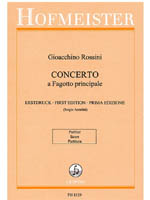
-
Rossini, Gioacchino
Concerto a Fagotto Principale - score (Azzolini)
Category: Orchestra Full Scores
Item: 136437
Grade:
Price: $61.95
Availability: Ships in 10 to 15 Days - View Shopping Cart
-
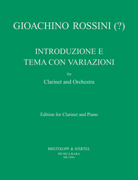
-
Rossini, Gioacchino
Introduction, Theme & Variations in Bb (Pfeffer) [solo clarinet feature]
Romantic. Authenticity disputed. For solo clarinet; 1,2,0,1 winds; 2,0,0,0 brass and strings. Includes score & parts. The only printed source is a set of parts published by Breitkopf & H„rtel in 1823. Although it ascribes the entire piece to Rossini, the experts are not fully convinced. Nevertheless: the variations are perfectly idiomatic for the instrument, and are both lyrical and virtuoso. Moreover, the edition will increase the performance opportunities: Additional to the original setting, t...
Read More
Category: Orchestra Music
Item: 107931
Grade:
Price: $34.00
Availability: Usually Ships in 24 Hours - View Shopping Cart
-

-
Rossini, Gioacchino
Stabat Mater [Dover full score]
Category: Orchestra Full Scores
Item: 013516
Grade:
Price: $9.95
Availability: Usually Ships in 24 Hours - View Shopping Cart
-

-
Saint-Saens, Camille
Bacchanale, from Samson & Delilah (Isaac)
Category: Orchestra Music
Item: 136755
Grade: Grade 4 - Intermediate
Price: $75.00
Availability: Ships in 10 to 15 Days - View Shopping Cart
-

-
Saint-Saens, Camille
Bacchanale, from Samson & Delilah - full score (Isaac)
Category: Orchestra Music
Item: 136756
Grade: Grade 4 - Intermediate
Price: $10.00
Availability: Ships in 10 to 15 Days - View Shopping Cart
-

-
Saint-Saens, Camille
Bacchanale, from Samson & Delilah - full score (Isaac)
Category: Orchestra Full Scores
Item: 136756
Grade: Grade 4 - Intermediate
Price: $10.00
Availability: Ships in 10 to 15 Days - View Shopping Cart
-

-
Saint-Saens, Camille
Cavatine, op 144 (Coy) [solo trombone feature]
Cavatine, Opus 144 is a true Romantic solo work for the trombone. Benjamin Coy's arrangement for full orchestra is a pleasure to perform with its sweeping, majestic phrases, sweet and elegant middle section and dramatic conclusion. For advanced performers, the 6-minute work is a great showpiece to feature your trombone soloist. Instrumentation: solo trombone, 2,2,2,2 winds; 2,2,3,1 brass; timpani, percussion; strings. Score & parts. ...
Read More
Category: Orchestra Music
Item: 109401
Grade:
Price: $140.45
Availability: Ships in 10 to 15 Days - View Shopping Cart
-

-
Saint-Saens, Camille
Danse Macabre, op 40 (Ryden)
Category: Orchestra Music
Item: 136830
Grade: Grade 5 - Early Advanced
Price: $135.00
Availability: Ships in 10 to 15 Days - View Shopping Cart
-

-
Saint-Saens, Camille
Danse Macabre, op 40 - full score (Ryden)
Category: Orchestra Music
Item: 136831
Grade: Grade 5 - Early Advanced
Price: $30.00
Availability: Ships in 10 to 15 Days - View Shopping Cart
-

-
Saint-Saens, Camille
Danse Macabre, op 40 - full score (Ryden)
Category: Orchestra Full Scores
Item: 136831
Grade: Grade 5 - Early Advanced
Price: $30.00
Availability: Ships in 10 to 15 Days - View Shopping Cart
-
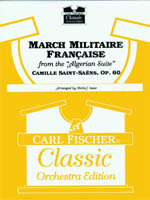
-
Saint-Saens, Camille
Marche Militaire Francaise, from Algerian Suite, op 60 (Isaac)
Category: Orchestra Music
Item: 136840
Grade: Grade 5 - Early Advanced
Price: $75.00
Availability: Ships in 10 to 15 Days - View Shopping Cart
-

-
Saint-Saens, Camille
Marche Militaire Francaise, from Algerian Suite, op 60 - score (Isaac)
Category: Orchestra Music
Item: 136841
Grade: Grade 5 - Early Advanced
Price: $15.00
Availability: Ships in 10 to 15 Days - View Shopping Cart
-

-
Saint-Saens, Camille
Marche Militaire Francaise, from Algerian Suite, op 60 - score (Isaac)
Category: Orchestra Full Scores
Item: 136841
Grade: Grade 5 - Early Advanced
Price: $15.00
Availability: Ships in 10 to 15 Days - View Shopping Cart
-

-
Schoenberg, Arnold
Verklaerte Nacht; Pierrot Lunare [Dover full score]
Category: Orchestra Full Scores
Item: 020978
Grade:
Price: $18.95
Availability: Usually Ships in 24 Hours - View Shopping Cart
-
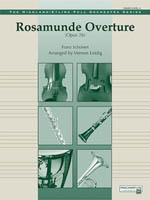
-
Schubert, Franz
Rosamunde Overture, op 26 (Leidig)
Category: Orchestra Music
Item: 136757
Grade: Grade 4 - Intermediate
Price: $85.00
Availability: Ships in 10 to 15 Days - View Shopping Cart
-

-
Schubert, Franz
Rosamunde Overture, op 26 - full score (Leidig)
Category: Orchestra Music
Item: 136758
Grade: Grade 4 - Intermediate
Price: $7.00
Availability: Ships in 10 to 15 Days - View Shopping Cart
-

-
Schubert, Franz
Rosamunde Overture, op 26 - full score (Leidig)
Category: Orchestra Full Scores
Item: 136758
Grade: Grade 4 - Intermediate
Price: $7.00
Availability: Ships in 10 to 15 Days - View Shopping Cart
-

-
Schubert, Franz
Symphonies Nrs 4, 5, 8 & 9 [Dover full score]
Category: Orchestra Full Scores
Item: 009447
Grade:
Price: $20.95
Availability: Usually Ships in 24 Hours - View Shopping Cart
-

-
Schubert, Franz
Symphony No 2, movement 1 (Meyer)
Category: Orchestra Music
Item: 136703
Grade: Grade 3 - Early Intermediate
Price: $59.00
Availability: Ships in 10 to 15 Days - View Shopping Cart
-

-
Schubert, Franz
Symphony No 2, movement 1 - full score (Meyer)
Category: Orchestra Music
Item: 136704
Grade: Grade 3 - Early Intermediate
Price: $9.00
Availability: Ships in 10 to 15 Days - View Shopping Cart
-

-
Schubert, Franz
Symphony No 2, movement 1 - full score (Meyer)
Category: Orchestra Full Scores
Item: 136704
Grade: Grade 3 - Early Intermediate
Price: $9.00
Availability: Ships in 10 to 15 Days - View Shopping Cart
-
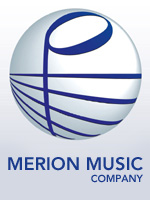
-
Schumann, Robert
Colloquies (3) for French Horn & Orchestra [score only]
Movements entitled: Rumination; Renewal; Remembrance. Commissioned by The New york Philharmonic. Duration: 24:00 minutes. Full score only.
Category: Orchestra Full Scores
Item: 008111
Grade:
Price: $22.00
Availability: Usually Ships in 24 Hours - View Shopping Cart
-

-
Schumann, Robert
Genoveva Overture, op 81 (Riedel) [study score]
Robert Schumann placed great importance on the genre of the "overture", as can be seen in the chronology of the genesis of his sole opera Genoveva. In his "Haushaltbuch" the composer entered as his first idea "thoughts of an overture", then produced the score even before having begun working on the actual opera. Schumann was right on the mark when he suspected that "the overture alone should enjoy a favorable reception". The Overture appeared in print at about the same time that the opera was pre...
Read More
Category: Orchestra Study Scores
Item: 130431
Grade:
Price: $20.95
Availability: Usually Ships in 24 Hours - View Shopping Cart
-

-
Schumann, Robert
Manfred Overture, op 115 (Riedel) [study score]
Schumann had already worked on Byron's Manfred as a law student, and the topic fascinated him from that time on. Perhaps he discovered a spiritual affinity to himself in the romantic hero's inner conflict? In any event, he decided on a stage rendition ofthe drama with incidental music, an entirely new genre that he had been dreaming of for some time already. He conducted the overture - it dates from 1848 - for the first time as a separate piece in March 1852. In addition, he followed the preparat...
Read More
Category: Orchestra Study Scores
Item: 130430
Grade:
Price: $22.95
Availability: Usually Ships in 24 Hours - View Shopping Cart
-
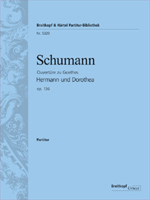
-
Schumann, Robert
Overture to Hermann & Dorothea, op 136 (Riedel) [study score]
The Overture to Hermann and Dorothea is the only compositional result that Schumann reaped from Goethes epic poem. He had originally planned an entire opera, then a Singspiel, and finally an oratorio. In the end (1851), he quickly produced an orchestral score that remained unprinted during his lifetime. The striking thematic use of the Marseillaise is multiply motivated: Goethes poem unfolds in 1796, when the two eponymous lovers are fleeing from the French revolutionary troops; Schumann had dire...
Read More
Category: Orchestra Study Scores
Item: 130428
Grade:
Price: $19.95
Availability: Usually Ships in 24 Hours - View Shopping Cart
-

-
Schumann, Robert
Overture, Scherzo & Finale in E, op 52 (Jost) [study score]
That Schumann truly dug his heels into symphonic creation becomes clear at the latest when we look not only at his four well-known symphonies, but also at the works between the genres, such as the Overture, Scherzo and Finale. Unlike the traditional symphonic form, this work has no slow movement. Schumann spoke of it as a suite which hints at a loose connection of movements and as a sinfonietta. Ultimately, he decided to name it after the headings of the three movements which also share common tr...
Read More
Category: Orchestra Study Scores
Item: 130429
Grade:
Price: $24.95
Availability: Ships in 10 to 15 Days - View Shopping Cart
-
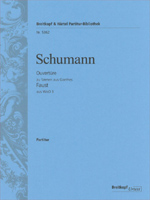
-
Schumann, Robert
Scenes from Goethe's Faust, WoO 3 (Riedel) [study score]
The question "Why add music to such perfect poetry?" preoccupied Schumann long and intensively. His first compositional approach to Goethes "Faust" began in 1844, but it was not until 1851 that he finally completed the Scenes. At Liszts suggestion, Schumann added an overture in 1853, a symphonic "instrumental introduction" which atmospherically evokes the action of the Scenes but has no direct thematic reference to them. As an independent overture, the work has been played relatively rarely in co...
Read More
Category: Orchestra Study Scores
Item: 130432
Grade:
Price: $15.95
Availability: Usually Ships in 24 Hours - View Shopping Cart
-

-
Serocki, Kazimierz
Concerto for Trombone
Category: Orchestra Full Scores
Item: 025134
Grade:
Price: $69.00
Availability: Ships in 6 to 9 Days - View Shopping Cart
-

-
Shostakovich, Dmitri
Symphony No 1 in Fm, op 10 [New Collected Works Ed.]
New Collected Works edition, published by DSCH (official Russian edition authorized by the Shostakowich estate). Cloth/hard cover. Volume 1 includes Symphony No 1. Full score only - parts not included.
Category: Orchestra Full Scores
Item: 045851
Grade:
Price: $80.95
Availability: Usually Ships in 24 Hours - View Shopping Cart
-

-
Shostakovich, Dmitri
Symphony No 5, op 47 [study score]
Category: Orchestra Study Scores
Item: 082426
Grade:
Price: $32.00
Availability: Ships in 6 to 9 Days - View Shopping Cart
-

-
Shostakovich, Dmitri
Symphony No 11, op 103
Category: Orchestra Study Scores
Item: 057281
Grade:
Price: $46.00
Availability: Usually Ships in 24 Hours - View Shopping Cart
-

-
Sibelius, Jean
Finlandia (Goldsmith, O)
Category: Orchestra Music
Item: 046385
Grade: Advanced
Price: $80.00
Availability: Usually Ships in 24 Hours - View Shopping Cart
-

-
Sibelius, Jean
Finlandia & Other Tone Poems [Dover full score]
Masterly compositions reveal the Finnish composer's great gifts for thematic development and formal structure, as well as his ability to infuse his music with strong, tightly reined emotion. Reproduced directly from authoritative German editions. Table of contents. List of instruments. Reprint of the Breitkopf & H„rtel, Leipzig; Schlesinger, Berlin; and State Music Publishers, Moscow, editions. Full orchestral scores of: • Finlandia • Valse Triste • The Swan of...
Read More
Category: Orchestra Full Scores
Item: 009263
Grade:
Price: $26.95
Availability: Usually Ships in 24 Hours - View Shopping Cart
-

-
Sibelius, Jean
FInlandia, op 26, no 7
FINLANDIA was written by Jean Sibelius, one of the most celebrated Finnish composers. Originally written in 1899 for a Finnish press fund-raising gala under the name "Finland Awakens," this piece, along with a few other works performed at the gala, were written to covertly oppose Russia's increasing censorship. Sibelius revised and renamed this work to its current title in 1900. It premiered on July 2, 1900, in Helsinki by the Helsinki Philharmonic Society conducted by Robert Kajanus. At times, F...
Read More
Category: Orchestra Music
Item: 136832
Grade: Grade 5 - Early Advanced
Price: $75.00
Availability: Ships in 10 to 15 Days - View Shopping Cart
-

-
Sibelius, Jean
FInlandia, op 26, no 7 - full score
Category: Orchestra Music
Item: 136833
Grade: Grade 5 - Early Advanced
Price: $20.00
Availability: Ships in 10 to 15 Days - View Shopping Cart
-

-
Sibelius, Jean
FInlandia, op 26, no 7 - full score
Category: Orchestra Full Scores
Item: 136833
Grade: Grade 5 - Early Advanced
Price: $20.00
Availability: Ships in 10 to 15 Days - View Shopping Cart
-

-
Smith, Robert W.
American Portrait No.1 (Lake Township, Ohio)
Category: Orchestra Music
Item: 131373
Grade:
Price: $75.00
Availability: Usually Ships in 24 Hours - View Shopping Cart
-

-
Smith, Robert W.
American Portrait No.1 (Lake Township, Ohio) - full score
Category: Orchestra Full Scores
Item: 136759
Grade: Grade 4 - Intermediate
Price: $9.00
Availability: Ships in 10 to 15 Days - View Shopping Cart
-

-
Smith, Robert W.
American Portrait No.1 (Lake Township, Ohio) - full score
Category: Orchestra Music
Item: 136759
Grade: Grade 4 - Intermediate
Price: $9.00
Availability: Ships in 10 to 15 Days - View Shopping Cart
-

-
Smith, Robert W.
Into the Storm
Category: Orchestra Music
Item: 136834
Grade: Grade 5 - Early Advanced
Price: $65.00
Availability: Ships in 10 to 15 Days - View Shopping Cart
-

-
Smith, Robert W.
Into the Storm - full score
Category: Orchestra Music
Item: 136835
Grade: Grade 5 - Early Advanced
Price: $9.00
Availability: Ships in 10 to 15 Days - View Shopping Cart
-

-
Smith, Robert W.
Into the Storm - full score
Category: Orchestra Full Scores
Item: 136835
Grade: Grade 5 - Early Advanced
Price: $9.00
Availability: Ships in 10 to 15 Days - View Shopping Cart
-
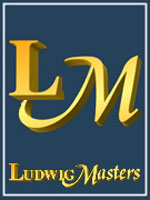
-
Spohr, Louis
Concerto for Clarinet & Orchestra No 1 in Cm
Category: Orchestra Study Scores
Item: 134596
Grade: Advanced
Price: $16.95
Availability: Ships in 10 to 15 Days - View Shopping Cart
-
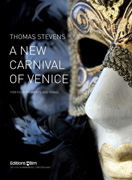
-
Stevens, Thomas
New Carnival of Venice, A - SCORE [trumpet quartet feature]
20th Century (1985). The "New Carnival of Venice" was written in 1985 for a July 4th concert celebrating American Independence Day by the Los Angeles Philharmonic Orchestra at the Hollywood Bowl. Two weeks before the event, the General Director of the Philharmonic and famed impresario, Ernest Fleischmann, told me the scheduled soloist for the concert had cancelled and asked if I could do a trumpet solo or had any other ideas for something that would be appropriate for an outdoor July 4th "Pops" c...
Read More
Category: Orchestra Music
Item: 107908
Grade:
Price: $47.95
Availability: Usually Ships in 24 Hours - View Shopping Cart
-

-
Story, Michael
Lost Tomb of the Incas
Category: Orchestra Music
Item: 136678
Grade: Grade 2 - Late Elementary
Price: $60.00
Availability: Ships in 10 to 15 Days - View Shopping Cart
-

-
Story, Michael
Lost Tomb of the Incas - full score
Category: Orchestra Full Scores
Item: 136679
Grade: Grade 2 - Late Elementary
Price: $9.00
Availability: Ships in 10 to 15 Days - View Shopping Cart
-

-
Story, Michael
Lost Tomb of the Incas - full score
Category: Orchestra Music
Item: 136679
Grade: Grade 2 - Late Elementary
Price: $9.00
Availability: Ships in 10 to 15 Days - View Shopping Cart
-

-
Story, Michael
Slingshot
Category: Orchestra Music
Item: 136676
Grade: Grade 2 - Late Elementary
Price: $60.00
Availability: Ships in 10 to 15 Days - View Shopping Cart
-

-
Story, Michael
Slingshot - full score
Category: Orchestra Full Scores
Item: 136677
Grade: Grade 2 - Late Elementary
Price: $9.00
Availability: Ships in 10 to 15 Days - View Shopping Cart
-

-
Story, Michael
Slingshot - full score
Category: Orchestra Music
Item: 136677
Grade: Grade 2 - Late Elementary
Price: $9.00
Availability: Ships in 10 to 15 Days - View Shopping Cart
- p.1 (Ad - Be)
- p.2 (Be - Br)
- p.3 (Br - De)
- p.4 (De - Ha)
- p.5 (Ha - Ha)
- p.6 (Hi - Ma)
- p.7 (Ma - Mu)
- p.8 (Mu - Ro)
- p.9 (Ro - St)
- p.10 (St - Wh)
- p.11 (Wh - Ze)
- Next >
More Options
- Use our Custom Order Page to special order items you can't find.
- Use our Catalog Order Page to order items from a printed catalog, or if you already know our catalog number for the item(s) you're interested in.
- And as always, feel free to E-mail us with your questions!
